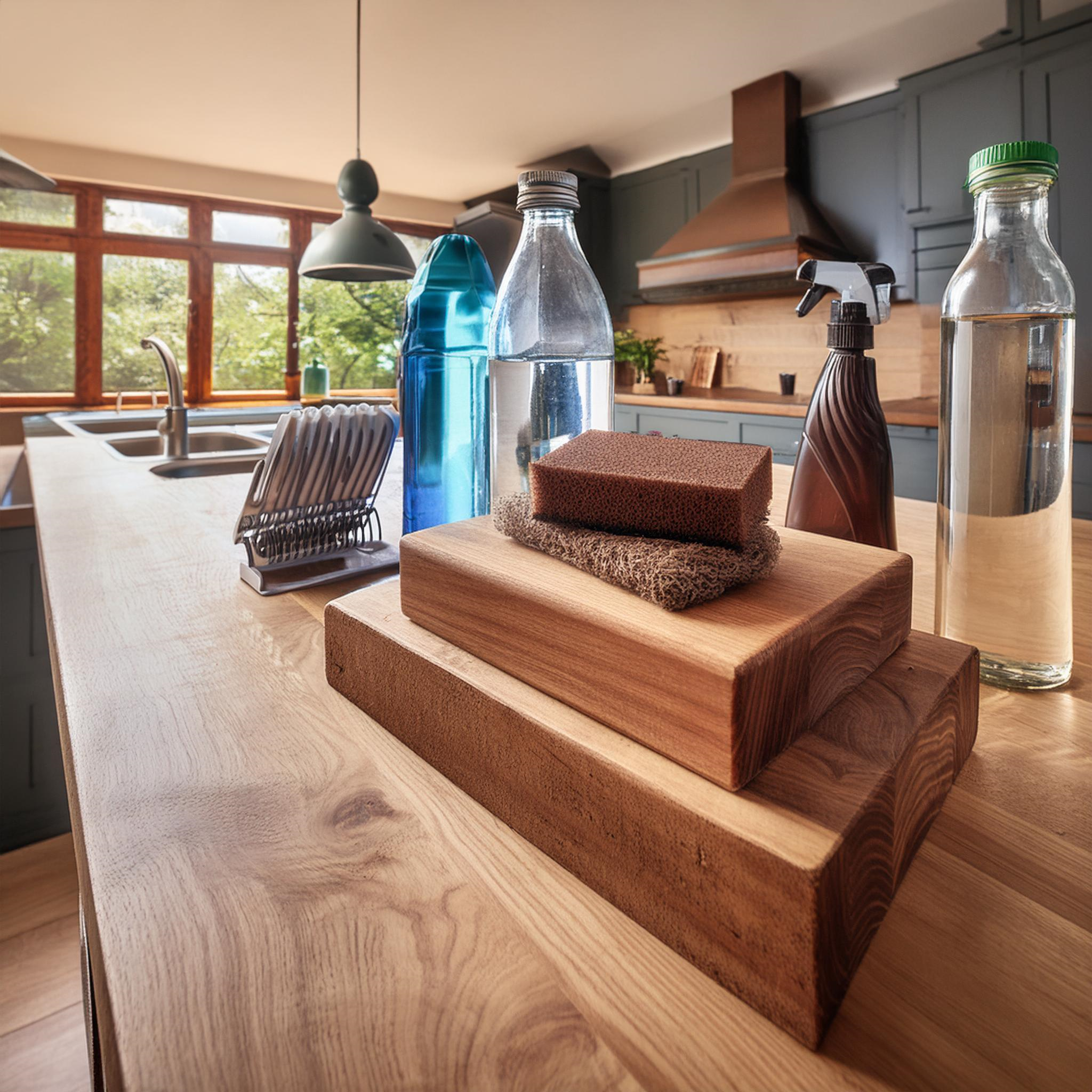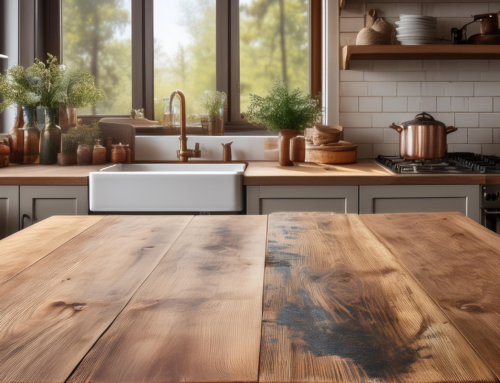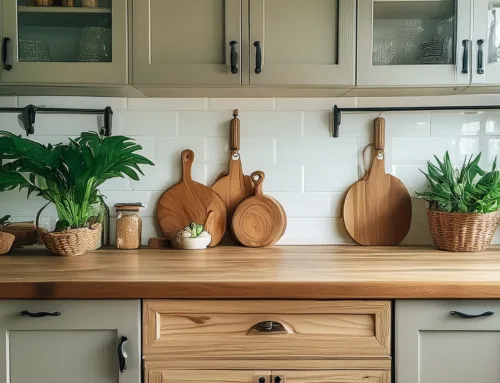Butcher block countertops add a warm and functional style to any kitchen. With proper care, these surfaces can maintain their beauty and functionality for years. Below, we provide a detailed guide on how to effectively maintain your butcher block countertops, ensuring they age gracefully alongside your home.
Daily Cleaning Routine
Regular Cleaning
To slow the buildup of grime, start by mixing warm water with gentle dish soap. Scrub against the grain for a deep clean, then rinse the countertop with a clean, damp cloth. Finally, dry thoroughly with a soft towel to prevent water damage.
Deep Cleaning
For a deeper clean, apply white vinegar with a dishcloth. Let it stand for 15 minutes to harness its natural antibacterial properties, then rinse and dry as usual. This method is particularly effective for sanitizing and refreshing the surface.
Conditioning and Maintenance
Regular Conditioning
Initially, condition your butcher block more frequently, typically once a week for the first couple of months. As the wood stabilizes, reduce this to monthly conditioning. Use high-quality wood conditioners made from food-grade oils and natural waxes to keep the wood nourished and resistant to damage.
Applying Conditioner
Before your first application of oil and wax, lightly sand the countertop to enhance the wood’s absorbency. This prepares it for better absorption of the oil, which revitalizes tired wood, and the beeswax, which fills in nicks and textures. Always follow the product instructions for the best results.
Refinishing Your Countertop
Routine Sanding and Oiling
Conduct light sanding followed by oiling annually to maintain the surface and keep it looking fresh. This not only preserves the wood’s appearance but also its functionality.
Complete Refinishing
Every 3-5 years, depending on the level of use and aesthetic preferences, consider a full refinish. This extensive care helps repair deeper damage and restore the countertop to like-new condition.
Alternative Care Methods
Stain Removal
For light surface stains, use a dough scraper or a razor blade to gently scrape away debris without damaging the wood. For deeper stains, sand the area starting with 180 grit sandpaper followed by 220 grit. Although sanding will lighten the area, it can blend in once re-oiled.
Complete Restoration
If your butcher block appears overly worn, consider sanding the entire surface with coarse, medium, and fine sandpaper. This comprehensive approach can restore it to its original glory.
Accidental Discoveries
Interestingly, using a Magic Eraser can effectively remove surface stains without altering the wood’s natural color—a simple yet effective trick for spot cleaning.
Conclusion
Butcher block countertops represent a significant investment in your kitchen’s functionality and style. By performing regular cleaning, annual maintenance, and periodic refinishing, you can protect this investment and enhance its longevity. Whether you are addressing routine maintenance or specific issues like stains, the right care will ensure your butcher block continues to look great and function well for years to come. Remember, the beauty of butcher block comes from both its utility and appearance, making it a cherished feature in any kitchen.




Leave A Comment